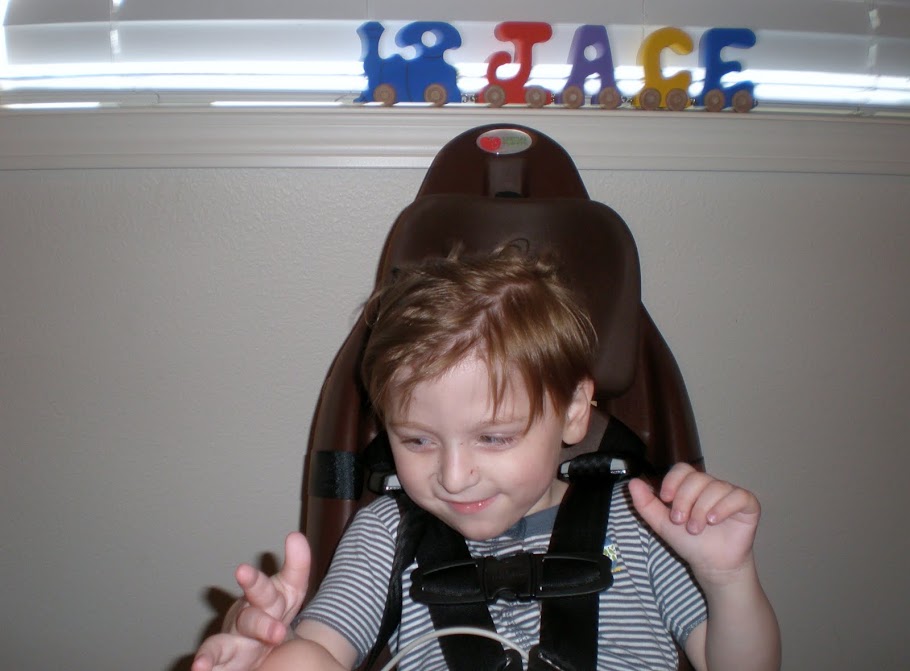Thankfully, early intervention came into his life just a few months after his release from the NICU. We were blessed with an amazing team of therapists who worked with us weekly, and with Jace that meant, occupational therapy twice a week, physical therapy once a week, speech therapy once every other week and vision therapy once a month.
The easiest way to describe him would be to view this link, it is the best description I have found:
http://www.indianchild.com/CerebralPalsy/athetoid-cerebral-palsy.htm
What is athetoid cerebral palsy ?
The mind is keen but the body is not! Unlike Spastic CP, the Athetoid CP is marked by a movement disorder of muscles, which are too loose, giving the child no vertical stability. His whole body is affected. The Athetoid child is probably more intelligent than even an average, normal child, leave alone children with other forms of CP. But, he has difficulty scratching his nose, or holding a toothbrush or a pen. He really needs to concentrate hard on muscle coordination to make them obey his command. His face contorts and grimaces in ugly movements that he has no control over. Drooling is a very typical symptom.
Constant writhing movements of the limbs, especially the legs, gives him the appearance of a ‘dancer’. Unfortunately, it is only an appearance. His feet are unable to bear his weight and he keeps pulling them up. The knees bend inwards, touching each other making it extremely difficult for him to be upright, to sit or to walk. In treating patients with Athetoid CP, the focus is on helping the child to regain his centre of gravity.
The Basal Ganglia in the midbrain are specialized structures, which help maintain posture and automatic movements like the swing of the arms while walking. In Athetoid CP (also called Dyskinetic CP), it’s these Basal Ganglia, which are damaged causing fluctuations in the muscle tone throughout the body. The muscle tone is a mix of high and low i.e. it is sometimes too tight and sometimes too loose and weak. The changeover from high to low is completely unpredictable, making the movements of the entire body uncontrolled and involuntary.
This makes it very frustrating for both the child and his parents, because his intelligence wants him to do some simple tasks at least, but the body refuses. Some experts attribute this damage to Basal Ganglia, to increased levels of bilirubin in the child from infections and blood incompatibility between the mother and her child.
Athetoid CP gets aggravated when the stress levels are high, but almost disappears when the child is asleep.
The parents need a great deal of patience and determination to cope with their child’s stress when he is unable to touch, feel and learn like any other child. They need to keep up his sagging interest, and encourage him along his slow progress. Such children respond well to stress reducing activities, and to cooler climates as their bodies are forever warmed up because of the constant involuntary movement of their body.
In addition to physical and Speech therapy, Yoga and Martial Arts (with perseverance) have been found to be very effective in improving their muscle tone and coordination.
That being explained...to me, he is just Jace...an incredibly happy boy who I can just look at end any of my worries melt away.

No comments:
Post a Comment